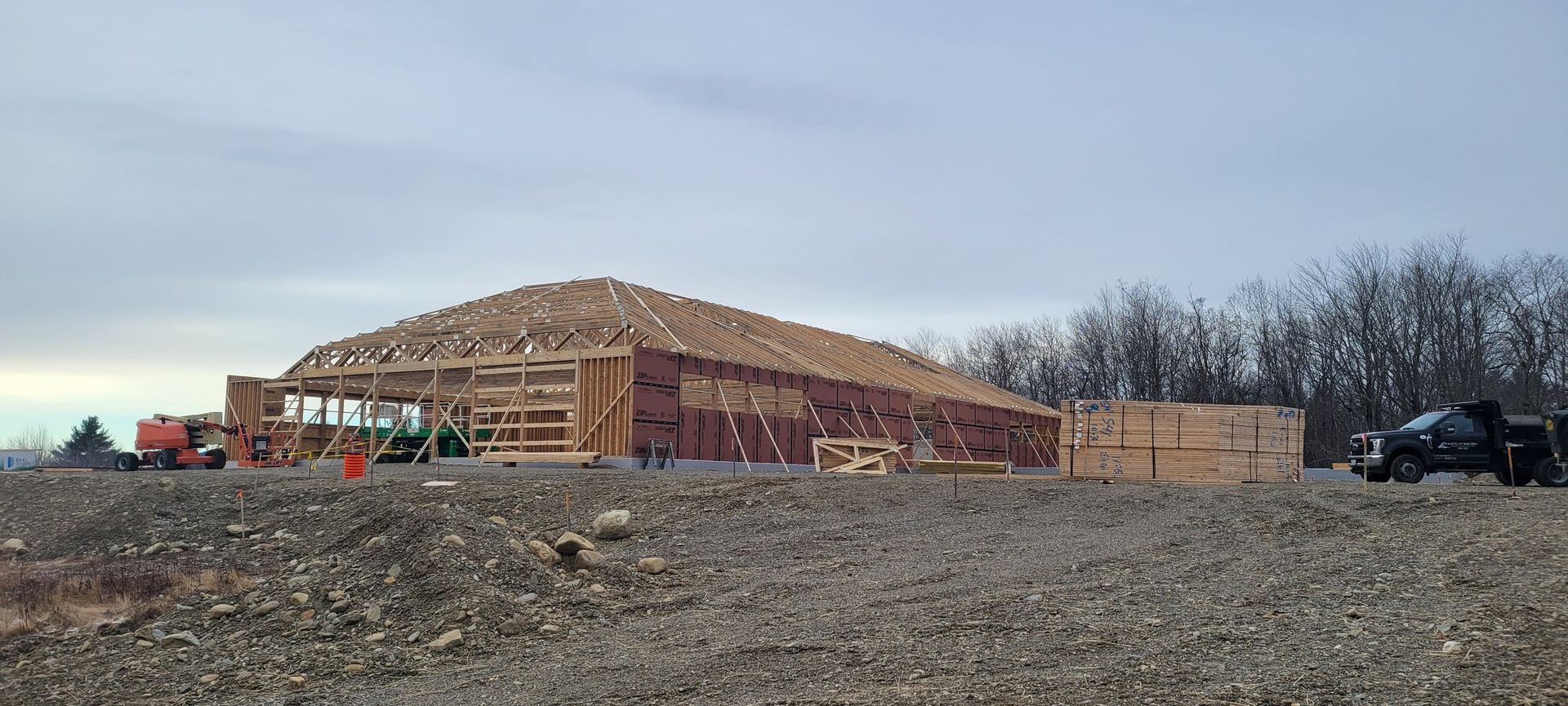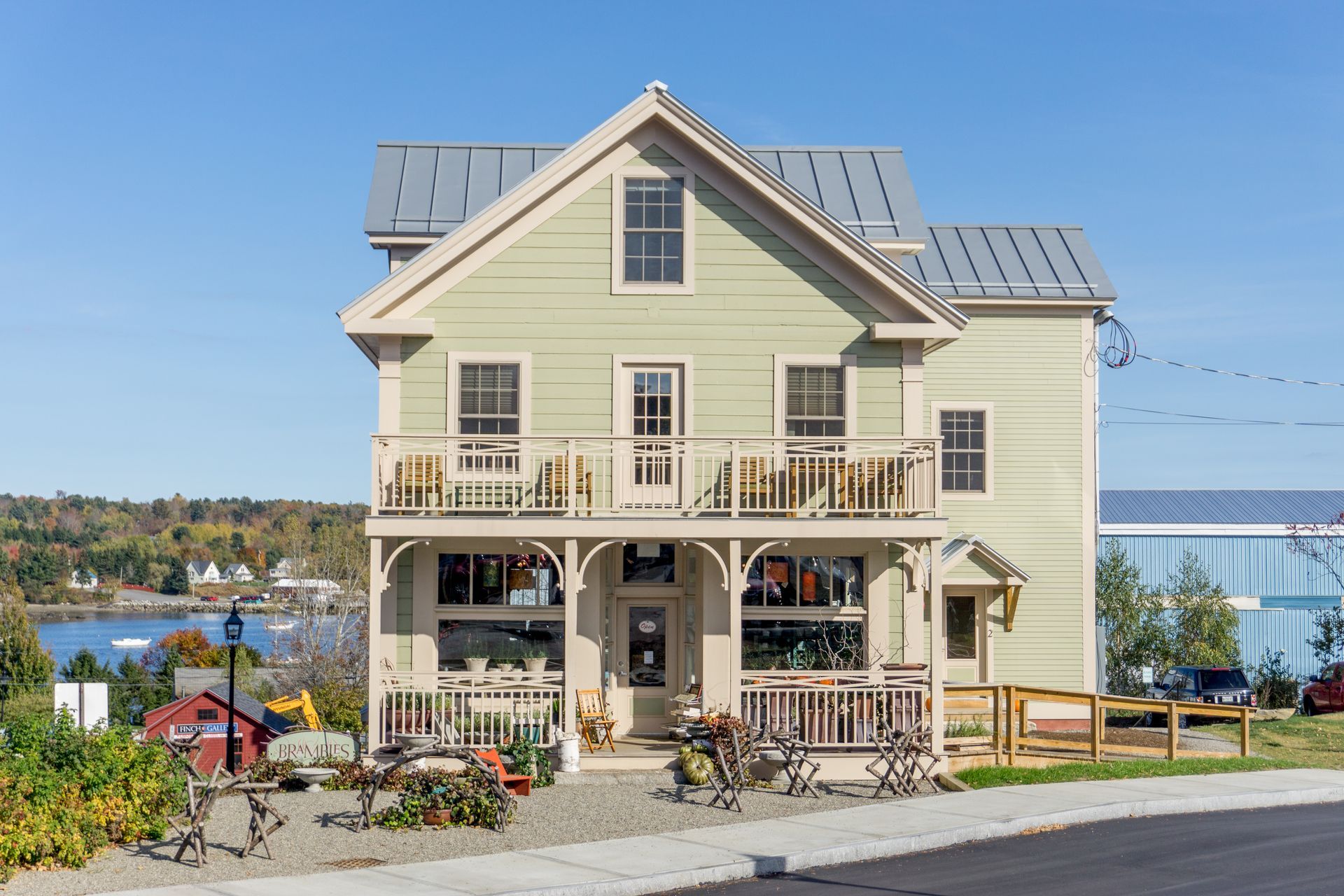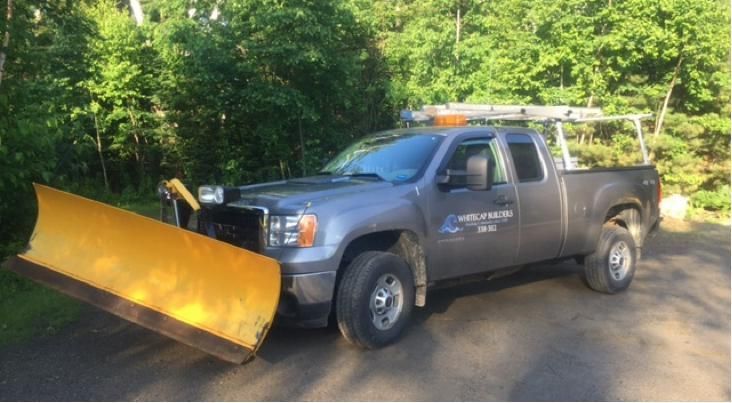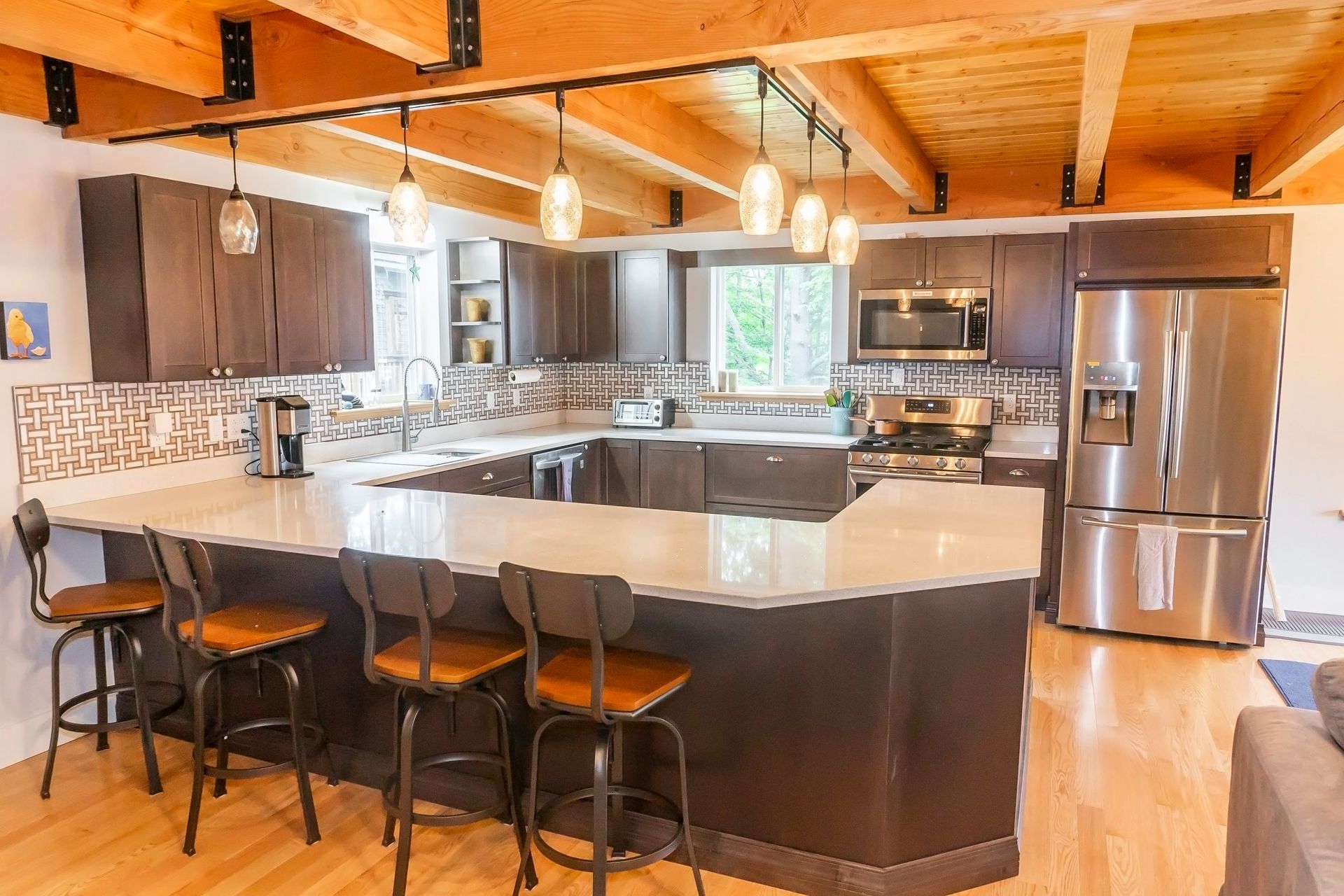Site Preparation for Construction: Necessary Step or Overhyped Expense?

Every construction project starts with the land, and preparing it properly is essential. Site preparation ensures the ground is safe, stable, and ready for building. From clearing debris to testing the soil and leveling the land, this step sets the stage for success.
But with its costs and effort, is site preparation a crucial step or just an added expense?
In this blog, we’ll explore why site preparation matters and how it impacts your project.
What is Site Preparation in Construction?
Site preparation is the first and most important step in any construction project. It’s about getting the land ready so the work can be done safely and efficiently. This usually includes clearing away trees, debris, and vegetation, leveling the ground, and compacting the soil to create a strong base for the foundation.
Every site is different, so the steps can vary. If there’s an old building, demolition might be needed. If the land is already clear, you might save time and skip that part. You may also need to check local rules for permits or prepare utilities like water and sewer connections.
Other tasks might include:
- Testing the soil to check its type and strength.
- Setting up proper drainage to handle water and avoid flooding.
- Adding safety barriers to keep the site secure.
Proper site preparation helps avoid big problems later, like unstable foundations or poor drainage. It’s an important investment to keep your project on track and within budget!
The Site Preparation Process
Preparing a site for construction involves several key steps. The exact process depends on your project and the condition of the site. For example, you might not need demolition if the land is already clear, but there could still be zoning rules or other challenges to address. Here’s a breakdown of the process:
1. Evaluate the Site
The first step is a thorough evaluation of the site. This includes checking for obstacles like trees, rocks, or underground utilities. A soil test is also essential. This test determines if the soil is stable enough to support the foundation, building, and heavy equipment. Unstable soil can lead to problems like foundation cracks or shifting.
Soil is classified into categories, such as:
- Stable Rock: Strong but harder to dig through.
- Type A Soil: Dense clay with high strength.
- Type B Soil: Moderate stability, like silt or gravel.
- Type C Soil: Loose soil, such as sand or wet soil.
Check for underground utilities like water pipes, sewer lines, or electrical cables. Before digging, contact 811 to confirm their locations and avoid costly mistakes.
2. Survey the Land
Once the site is evaluated, hire a surveyor to mark the boundaries and layout. This step ensures you know exactly where construction can take place and avoids zoning issues. It also helps in planning the placement of buildings, roads, and other features.
3. Develop a Site Design Plan
After the survey, create a detailed site plan. This plan shows where structures, drainage systems, and utilities will go. It also accounts for stormwater management and access points for workers and equipment. A well-thought-out plan helps avoid delays during construction.
4. Create Access Points
Set up pathways for workers, machinery, and materials. Heavy equipment like bulldozers and excavators need easy access to the site. Ensure the site is organized for smooth traffic flow, and consider adding temporary facilities like restrooms for workers.
5. Clear the Land
The next step is clearing the site of trees, rocks, debris, and any old structures. If demolition is needed, use heavy equipment like loaders or bulldozers to get the job done efficiently. This prepares the site for grading and foundation work.
6. Install Drainage and Erosion Controls
Proper drainage systems are critical to prevent flooding and soil erosion. Install features like silt fences, retention ponds, or other erosion controls to manage water flow. This step protects both the construction site and nearby areas from damage.
7. Grade and Compact the Ground
Finally, shape the land to meet the project’s needs. Use methods like “cut and fill” to level the terrain. Once grading is done, compact the soil to create a stable base for the foundation. This step ensures the ground can handle the structure and prevents future problems like settling.
By following these steps, you’ll have a well-prepared site that’s safe, efficient, and ready for construction. Each step is vital for avoiding risks, staying on budget, and ensuring your project runs smoothly.
Tips for Safe and Successful Site Preparation
Preparing a construction site requires careful planning and the right steps to ensure everything goes smoothly. Here are some practical tips to help you:
Focus on Safety
Make sure safety is your top priority. Update safety rules and ensure all workers have the proper protective gear like helmets and gloves. Keeping everyone safe on-site reduces accidents and delays.
Have a Clear Plan
Create a detailed plan for the site preparation process. This should include clearing debris, grading the land, and preparing for utilities like water and sewer. A good plan helps keep everything on track and avoids confusion.
Test the Soil
A soil test is essential to figure out if the ground can handle the weight of your building and equipment. It also helps determine the best way to stabilize the soil and prepare the foundation.
Choose the Right Tools and Equipment
Using the correct equipment for the job makes everything faster and safer. Smaller projects might need compact tools, while bigger jobs require heavy equipment like excavators and bulldozers.
Train Your Team
Your crew is key to getting the job done right. Make sure they understand their tasks and know how to use the equipment safely. A trained team works more efficiently and reduces mistakes.
Watch the Weather
Weather can affect the preparation process. Rain might create mud or delay digging, while strong winds can be dangerous for workers and equipment. Check the forecast and adjust your schedule to avoid weather-related problems.
Hire Experienced Professionals
Working with experienced professionals ensures that every aspect of site preparation is done correctly. They can help with soil testing, drainage planning, and overall site management, reducing risks and saving time.
Plan and Budget Early
Start planning and budgeting for site preparation as early as possible. Knowing the costs and resources required upfront helps prevent surprises and ensures your project stays within budget.
By following these tips, you’ll ensure the site is safe, organized, and ready for construction. Taking the time to plan and prepare will save you trouble down the line!
The Benefits of Proper Site Preparation
Clearing Away Obstacles
Before construction can begin, the site needs to be cleared of trees, rocks, debris, and anything else in the way. Proper clearing ensures there are no hidden obstacles that could disrupt the work or cause expensive delays later.
Easier Excavation Work
When the site is cleared, tasks like digging trenches or preparing the foundation become much smoother. With nothing in the way, excavation can be done more quickly and efficiently, saving both time and money.
Safe and Easy Access
A clean, well-prepared site allows workers, engineers, and equipment to move around freely. Without this step, access can become a challenge, leading to project delays and higher costs.
Protecting Pipes and Wires
Site preparation involves checking for underground utilities like pipes and cables. Identifying them early helps avoid damage during construction, preventing accidents and unnecessary repair costs.
Better Land Grading
Grading the land ensures proper drainage and prevents problems like flooding or erosion. It also shapes the site to fit the design and create a stable base for the foundation.
A Stronger, Longer-Lasting Project
A well-prepared site lays the groundwork for a building that’s safe and durable. It reduces risks like shifting soil or water damage, helping your structure stand strong for years.
Ready for Construction
Proper site preparation ensures the land is fully ready for construction, so everything goes smoothly from start to finish. It’s the key to avoiding delays, staying on budget, and building with confidence.
Taking the time to prepare the site properly might feel like an extra step, but it’s a smart investment that pays off throughout the entire construction process.
What Are the Essential Factors in Site Preparation?
Site preparation is a critical step in construction, and the specific requirements depend on several important factors. Here’s what you need to consider:
Type of Project
The kind of construction you’re planning—such as a house, office building, or road—impacts how much work the site will need. For example:
- A small home might only need land clearing and basic grading.
- A commercial building or infrastructure project will likely require more extensive work like soil tests, drainage systems, or demolition.
Project Size
The size of the project determines how much preparation is necessary. A small-scale project may need minimal clearing and grading, while a large-scale development might involve additional steps like detailed surveys, excavation, and erosion control.
Location of the Site
The location of your construction site plays a huge role in how you prepare it:
- Urban vs. Rural: Urban sites may require special permits and careful planning due to space restrictions, while rural sites may involve clearing vegetation or leveling uneven terrain.
- Soil Type: Loose soil, clay, or rocky terrain can influence foundation needs and soil stabilization efforts.
- Climate: Areas prone to heavy rain or flooding will need proper drainage systems, while dry regions may focus on controlling dust and wind erosion.
Taking the time to understand what the site needs will help avoid delays and keep your construction moving smoothly.
Risks of Skipping or Cutting Corners in Site Preparation
Rushing or skipping site preparation can cause serious problems that impact your construction project. Here are some of the biggest risks you might face:
Foundation Issues
If the site isn’t properly prepared, the foundation may crack, sink, or shift. Problems like uneven soil, poor compaction, or improper grading can lead to weak foundations, which are expensive and time-consuming to fix later.
Poor Drainage and Flooding
Without installing proper drainage, water can collect on-site, leading to flooding and erosion. This weakens the soil and can damage both materials and the structure itself, causing delays and added costs.
Project Delays and Rework
Skipping steps in site preparation often means more problems show up later. For example, unnoticed underground utilities or unstable soil could stop construction halfway through. Fixing these problems takes extra time and money, throwing off your budget and schedule.
Safety Risks
A site that isn’t properly prepared can be dangerous for workers and equipment. Loose soil, hidden underground pipes, or leftover debris can lead to accidents, injuries, and unexpected hazards on-site.
Expensive Mistakes in Real Life
There have been many cases where cutting corners during site preparation caused major issues, like collapsing structures, flooding damage, or unstable ground. These mistakes could have been avoided with proper preparation.
Skipping site preparation may seem like a quick way to save time or money, but it often leads to much bigger problems. Taking the time to do it right ensures a safer, smoother, and more cost-effective project.
Costs of Site Preparation: Investment or Expense?
How Much Does Site Preparation Cost?
Site preparation typically makes up about 4.86% of total construction costs. For example, in a project with a total budget of $1,293,953, site preparation could cost approximately $62,846.15. This includes tasks like clearing the land, soil testing, and grading the site.
What Drives the Cost of Site Preparation?
Size of the Site
Larger areas require more work, resources, and time, increasing overall costs.
Scope of Work
Tasks like clearing trees, removing debris, or stabilizing soil add to expenses. For instance, flat and open sites are cheaper to prepare compared to hilly or heavily wooded areas.
Location
Urban sites may be more expensive due to higher labor rates and stricter regulations. Rural areas might involve additional costs for access roads or heavy equipment transportation.
Special Requirements
If your project needs erosion control, drainage systems, or soil compaction, these will add to the budget. Unstable or poor-quality soil might require extra preparation to support the foundation.
Is Site Preparation Worth the Cost?
While site preparation costs may seem high, they are critical to ensure the stability, safety, and success of your construction project. Cutting corners on this step can lead to expensive problems later, such as foundation issues or drainage failures, making proper preparation a wise investment.
Understanding these costs upfront helps you plan better and avoid surprises in your construction budget.
Frequently Asked Questions
How long does site preparation take?
Site preparation usually takes 1 to 2 months, depending on the project type. Smaller residential projects may be quicker, while larger commercial developments can take more time due to tasks like clearing, grading, and setting up utilities.
What are the first 3 steps of a construction site?
The first three steps of preparing a construction site are:
- Site Evaluation: Inspect the site to identify obstacles like trees, rocks, or underground utilities. This step also includes testing the soil to make sure it can support the building.
- Surveying the Land: Mark property boundaries and determine where construction can take place. This step helps you stay within legal limits and plan effectively.
- Developing a Site Design Plan: Create a detailed plan that outlines where structures, drainage systems, and utilities will go. It also includes stormwater management and access points for workers and equipment to prevent delays during construction.
What comes after construction site preparation?
After site preparation, the next step is pouring the foundation. The type of foundation depends on the size and type of the building being constructed.
Why Proper Site Preparation Saves You Time and Money
Site preparation is a key step in any construction project. It ensures a stable foundation, improves safety, and prevents costly problems like flooding or foundation damage. While it adds to the budget, it’s a smart investment that helps your project run smoothly and last longer.
For professional help, White Cap Builders in Belfast, Maine, is here to assist. We specialize in quality home improvements, from new construction to renovations. Ready to get started? Call us at (207) 338-3112, and let’s bring your vision to life!

Contact
Our Services
Whitecap Builders | Designed and Built by Quantum Hawk









